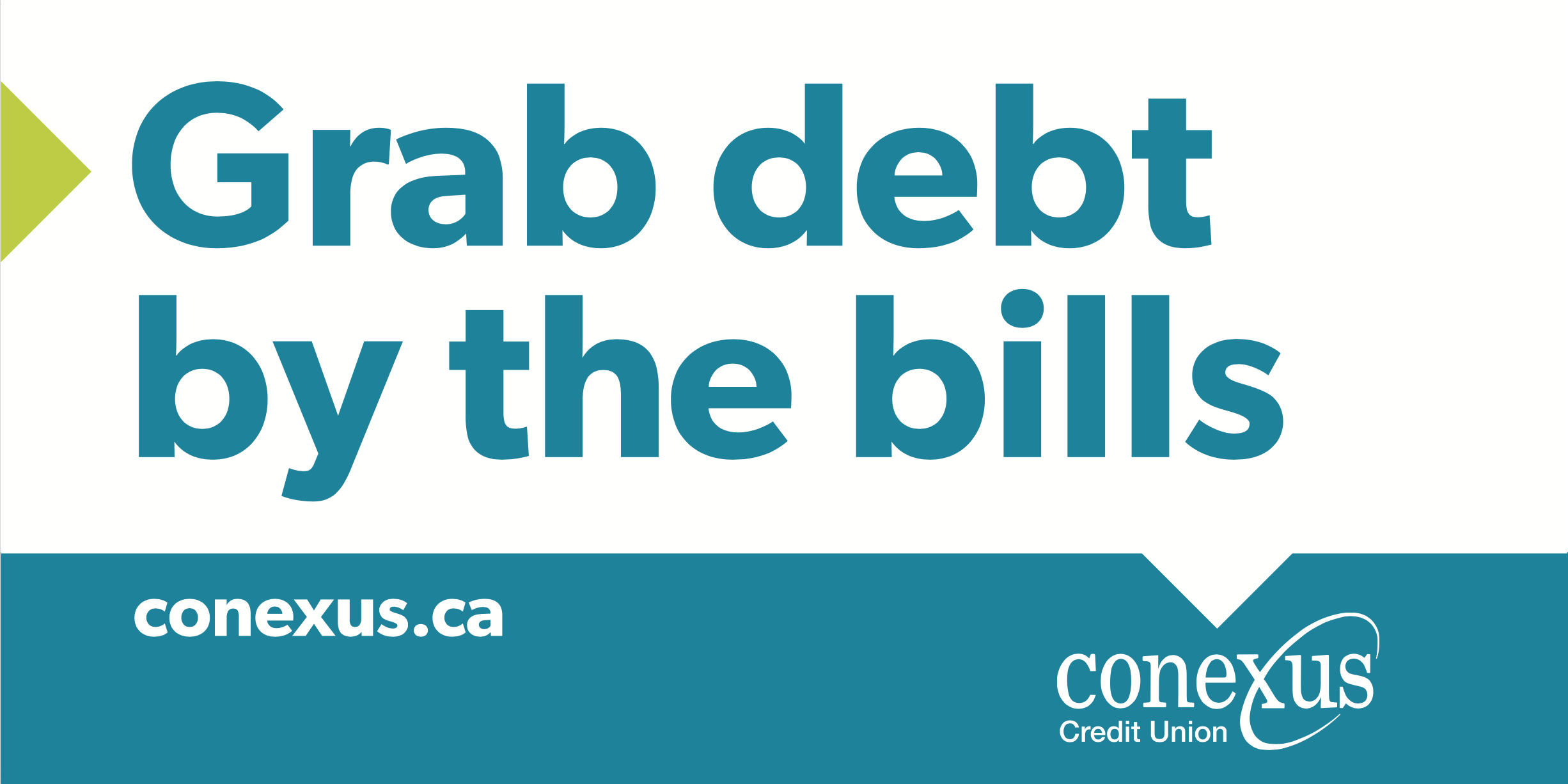“The advice I’d give you is, be really clear on purpose”
—Eric Dillon, CEO Conexus Credit Union
Your brand is not what you say, it’s what you do.
It’s easy to agree with that—but it’s hard to make it true.
Eric Dillon reflected with us on how Conexus found, and now live, their brand promise.
“Everybody talks mission, and vision, and all that stuff. We actually threw all that out and we answered one question, why do we exist? What purpose do we serve? And then it’s really easy to align the people you hire or the decisions you make if the organization is crystal clear on why you exist.”
Arriving at the “why” involved many brand sessions, iterations of statements and healthy internal conversations.
It is summed up in the Conexus brand promise; We exist to improve the financial well-being of our members. That promise has become a flag for the brand. A statement every employee can use to measure their work—new initiatives, products or promotions—everything. And just how deep does that promise go?
“Most institutions in our business—banks and other financial services firms—they measure success based on measurements of the institution. So, whether it’s growth of the institution, profitability of the institution or market share or those sorts of things. And I would say we had an ‘aha’ moment at Conexus, that the success of a financial cooperative, owned by members, actually should be the aggregation of the success of its members.”
Conexus has attained that elusive next-level status—the brand promise is the strategy. Or, the strategy is the brand promise. Whichever way you phrase it—it is crystal-clear. Make our members successful.
As Richard Rumelt advises in Good Strategy, Bad Strategy, Conexus has avoided the trap where every department throws their goals into the collective strategy pile.
“A long list of “things to do,” often mislabeled as “strategies” or “objectives,” is not a strategy. It is just a list of things to do. Such lists usually grow out of planning meetings in which a wide variety of stakeholders make suggestions as to things they would like to see done. Rather than focus on a few important items, the group sweeps the whole day’s collection into the “strategic plan.” Then, in recognition that it is a dog’s dinner, the label “long-term” is added so that none of them need be done today.”
For Conexus there’s no list. There is one goal.
“For us, we obsess about the financial wellness of our members. It’s not just marketing for us. Other places talk about this stuff, for us, we call it the proof.”
Up to this point, it could still be just words. Ya, sure- you care about my financial wellness. Eric understands there’s a need to deliver that promise.
“The promise we’re going to make in the marketplace—but more importantly the proof—that you’re actually better off financially at Conexus. So, our one sentence explanation is, ‘You should have evidence that you are better off financially having done business at Conexus.’ And if we can’t show you that, then in our mind, we’ve failed.”
As Terry O’Reilly highlighted in his book This I Know, being member-owned, Conexus has potential to delight, “...stock-price-driven companies hunt their customers instead of delighting them.”
Marketing, sales and product development have the same clear distinct message, which should, according to brand experts like Denise Lee Yohn, attract attention like a lighthouse.
And the Conexus team can use that brand promise to guide products, remuneration, —everything they do.
“If your brand is not being used as your company’s figurative GPS today, if it’s not driving what the company does and how it does it, what will determine the company’s direction when the market changes without warning, as markets always do? What happens when a crisis comes, since every business faces a crisis sooner or later? Have you built a great brand that can withstand the threat of such negative forces? Will your company have the clarity of a brand vision to remake itself, as IBM and other great brands have? Or will it be more apt to go the way of Kodak?"
Denise Lee Yohn, What Great Brands Do
How exactly will they live out this brand promise? Eric offers an example;
“There was a lot written a year ago about financial services and our industry and about sales targets. And there’s been very high-profile scandals at Wells Fargo and other places in the world where banks have done things that weren’t aligned with customers. We’re actually going to tie the variable compensation of our advisors to the financial wellness of our members. Not about the number of products they sell. Actually, the success of the households they’re expected to manage and advise. We believe it’s transformational.”

In this case, calling it transformational is an understatement. This is how a strong brand promise, a strong purpose, begins to define the actions Conexus takes. The brand is the guide for its actions.
“Lots of people are good at the glitzy campaigns, saying things in the marketplace that they will do, but the experience is actually something quite different. Most organizations would talk about and then try to build towards it, we built towards it, and only when we thought we were sufficiently far along did we talk to that marketplace about how and why we’re different.”
It’s important that the brand journey for Conexus didn’t stop at defining their purpose. They are actively seeking ways to demonstrate they mean what they say. Simon Sinek explained, that simply defining why isn’t enough, in his book Start With Why.
That we trust people with common values and beliefs is not, in itself, a profound assertion. There is a reason we’re not friends with everyone we meet. We’re friends with people who see the world the way we see it, who share our views and our belief set.
Trust does not emerge simply because a seller makes a rational case why the customer should buy a product or service, or because an executive promises change. Trust is not a checklist. Fulfilling all your responsibilities does not create trust. Trust is a feeling, not a rational experience. We trust some people and companies even when things go wrong, and we don’t trust others even though everything might have gone exactly as it should have. A completed checklist does not guarantee trust. Trust begins to emerge when we have a sense that another person or organization is driven by things other than their own self-gain. With trust comes trust.
You can’t convince someone you have value, just as you can’t convince someone to trust you. You have to earn trust by communicating and demonstrating that you share the same values and beliefs. You have to talk about your WHY and prove it with WHAT you do. Again, a WHY is just a belief, HOWs are the actions we take to realize that belief, and WHATs are the results of those actions. When all three are in balance, trust is built and value is perceived.
It all starts with a clear focus on brand purpose.
If you’d like help defining your brand purpose, contact us. In addition to Conexus, we’ve helped some of Western Canada’s top brands define, and act on their purpose.



